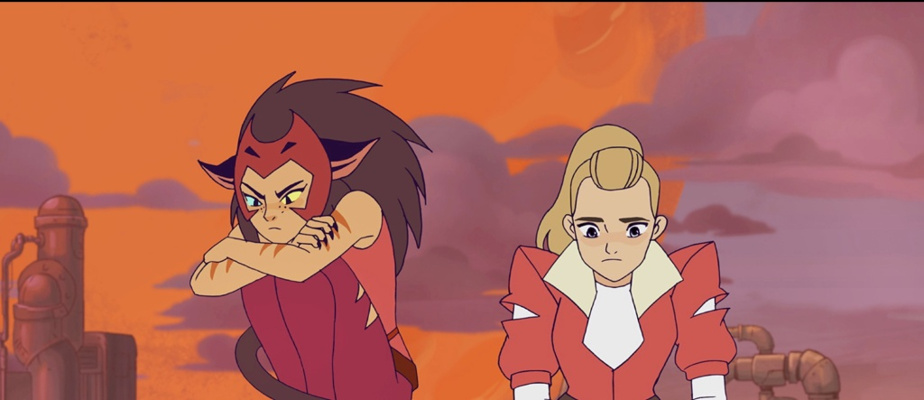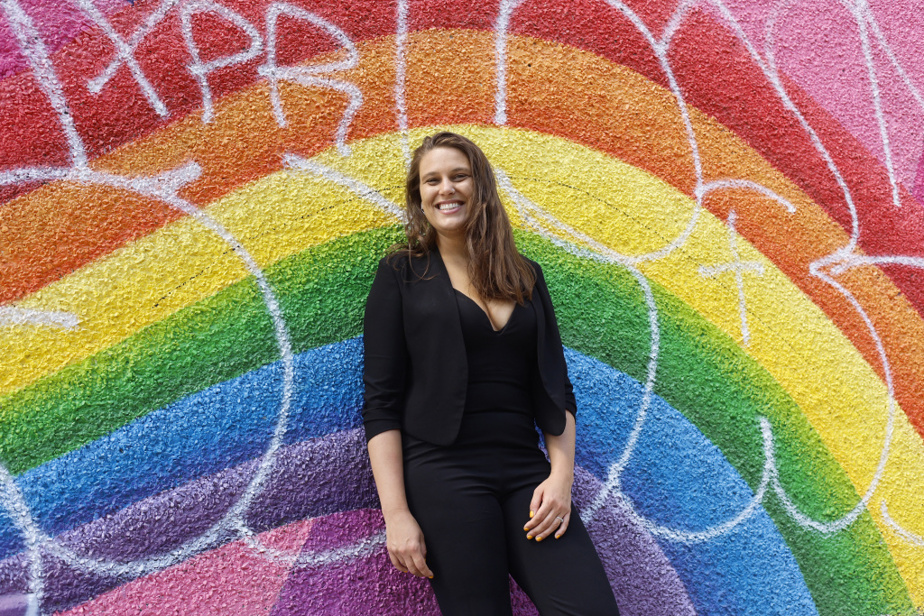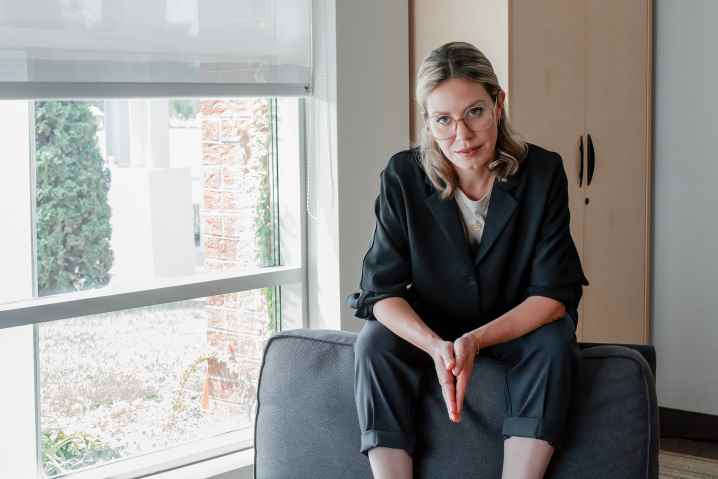Here, but especially elsewhere, a growing number of television series intended for an adult, family or adolescent audience feature lesbian characters or bisexual women. Whether or not sexual orientation is a key element of these shows, they show a reality that has long remained much less visible than the love between two men. They also offer a variety of models to girls and women who lacked them on the small screen.
Posted at 11:00 a.m.
“I remember watching The L Word in French on ARTV when I was a teenager, says Florence Gagnon. I didn’t listen to it loud in the basement at my parents’ house so they wouldn’t hear. It was the first time I had seen lesbians in an everyday context. I didn’t even know how it lived, lesbians, so we lacked models. »
The founder of Lez Spread the Word, a lesbian and queer magazine which precisely aims to show positive role models, did not really identify with the lives of these women in Los Angeles “who drive around in BMWs”. But, in the early 2000s, she didn’t really have any other option on the small screen.
Filmmaker Chloé Robichaud and she wanted to remedy the situation by creating, in 2014, Feminine/Feminine, a web series focusing on the life of a group of young lesbian women living in Montreal. “ The L Word had changed both of our lives, but it was not like us, ”insists Florence Gagnon, co-creator and executive producer of the 16-episode web series divided into two seasons.

PHOTO MARCO CAMPANOZZI, THE PRESS
Florence Gagnon, founder of Lez Spread the Word and co-creator of the Féminin/Féminin series
Significant diversification
Feminine/Feminine and The L Word (created in 2004) remain exceptions. Nevertheless, over the past decade, the number of series that feature lesbian or bisexual women has increased dramatically, even in mainstream programming. Florence Gagnon is thinking, among other things, of the couple formed by Carrie and Arizona in the popular series Grey’s Anatomy. “That was really successful, she says, and it was a big step forward in television for lesbian representation. »
“There has been quite an impressive diversification in recent times, and sexual orientation is no longer necessarily the main narrative thread of the character as it could have been ten years ago”, noted Tara Chanady , communication researcher who wrote a text on “lezbiqueer” visibility in the essay Queer television, published last spring by Editions du Remue-Ménage. His assertion is based above all on the growing diversity on American television.

IMAGE PROVIDED BY DREAMWORKS
Catra and Adora, tandem at the heart of the animated series She-Ra and the Princesses of Power, where sexual diversity, especially female couples, is well represented.
There are and have been lesbians on Quebec television of course: in Living memories, the academy Where Unit 9. “Lesbian characters on TV who are in prison, it does not help our parents to think that our life is going to be as beautiful as that”, slips however Florence Gagnon, also thinking of Orange Is the New Black.
She prefers Without an appointment, by Marie-Andrée Labbé, where Magalie Lépine-Blondeau plays a lesbian nurse-sexologist without it being important in the story. “I find it interesting, she explains, because it’s by showing as many models as possible that we remove the preconceived ideas about what a lesbian should look like. »
Examples of series of this genre, aimed at a family or adolescent audience, are more numerous south of the border: The Fosters, One Day At a Time, She-Ra and the Princesses of Power, Atypical and many others feature lesbian or queer and sometimes even non-binary characters. Tara Chanady also reports the series Euphoriawhere female homosexuality is represented quite centrally, without even being named.

PHOTO MARTIN CHAMBERLAND, THE PRESS
Tara Chanady, communication researcher, is interested in the “lezbiqueer” representativeness on the small screen.
We try to normalize by no longer naming [l’homosexualité]. It gives a more fluid vision of sexuality.
Tara Chanady, communication researcher
Less visible than gays
One reality remains, however: lesbians remain less visible on the small screen than gay men. “Gay men have always had more media visibility,” notes Tara Chanady. “It comes down to equality between men and women in general,” says Florence Gagnon. Women experience double discrimination: sexism and homophobia. Even in the LGBTQ2+ community, men still have more room, it’s a reflection of our society. »
She is convinced that the fact that Feminine/Feminine interested in a group of women set boundaries.
If we had done the same series, but it had been guys, we would have been financed full pine and we would have done eight seasons. A project between women has less power.
Florence Gagnon
Both women are convinced that a better and greater representation of lesbian realities on television can have a positive effect. However, it is important that this is done by women of diversity, they believe. “When it’s not written by LGBT people, we tend to fall into clichés,” agrees Florence Gagnon. “I think it’s necessary to have series that are produced by women of sexual diversity – lesbian, queer or bi. Feminine/Feminine, specifies Tara Chanady, it would not be the same thing if none of the people involved appeared in public as being part of sexual diversity. »
Six lesbian universes on the small screen

PHOTO EDOUARD PLANTE-FRÉCHETTE, LA PRESSE ARCHIVES
Chloé Robichaud (left) with part of the cast of Feminine/Femininein January 2014, namely Noémie Yelle, Kimberly Laferrière, Carla Turcotte and Ève Duranceau.
Characters from lesbians and bisexual women can now be found in a variety of TV shows, from sitcoms to cartoon fantasy adventures. Here are a few.
The L Word
Ellen DeGeneres made her coming out in life and in sitcom Ellen in 1997. The L Word, broadcast from 2004, is, however, the first series focusing on the lives of lesbians and bisexual women, and has been recognized in particular for its direct way of showing sexuality between women. There are many amorous intrigues, but the main part of the show lingers on a daily basis: Tina and Bette are looking for a donor to have a child, Jenny has just moved in with her fiancé, but is attracted to Marina, Dana is a player. professional tennis player who fears coming out in public, Shane is a killer… The L Word features not just lesbian characters, but an entire universe.
On Netflix
Feminine/Feminine
With Chloé Robichaud, Florence Gagnon created Feminine/Feminine, which shows the lives of young Quebec lesbians mainly in their late teens or twenties. Sexual orientation is central to the universe of Feminine/Feminine, but the issues raised concern everyone: love quest, breakups, illness, age difference in a couple, etc. The series has a “documentary” section where the characters speak, among other things, of their coming out or the need they feel to put a label on what they are or are not.
On HERE Tou.tv
She-Ra and The Princesses of Power
Inspired by a series from the 1980s, She-Ra and The Princesses of Power (She-Ra and the Princesses of Power en version française), by trans creator ND Stevenson, revolves around Adora’s quest and her love-hate relationship with Catra, her childhood friend. The fantasy series features strong female characters and emphasizes body, ethnic, and sexual diversity. In addition to the tandem of heroines, several characters – men, but especially women – live homosexual relations which are displayed, but never constitute a stake in these supernatural adventures. Some characters with more ambiguous attractions evoke bisexuality and others gender fluidity. There are also lesbian characters in animated series like Arcane, The Owl House and Steven Universe.
On Netflix
One Day at a Time
You can’t find a more classic sitcom than One Day at a Time : the series shows a family from Los Angeles with Cuban origins with an extravagant grandmother (extraordinary Rita Moreno) nostalgic for her country, a single mother and two teenagers. Beneath these appearances, however, she tackles a number of issues related to immigration, social inequalities and racism, but also homophobia and gender identity, since one of the characters will end up making his coming out and integrating their non-binary partner into family life. One Day at a Time is not a “lesbian series”, but nevertheless shows a lesbian life within a family that seems conventional at first glance, as is also the case ofAtypicalwhere one of the main characters juggles between homosexuality and bisexuality.
On Netflix (seasons 1, 2 and 3) and AppleTV (season 4)
Sense8
Created among others by the Wachowski sisters (trans writers and filmmakers also behind The Matrix), Sense8 revolves around eight characters from different parts of the world (United States, England, Germany, Iceland, Kenya, Mexico, South Korea and India) who discover that they are psychologically and emotionally connected to each other. The series stood out by showing a couple of women, one of whom, Nomi, is trans and moreover played by trans actress Jamie Clayton. Sense8 talks about homophobia, but does not make it a main narrative thread. Or only briefly. Here, sexual diversity is a fact, as is ethnic diversity.
On Netflix
Without an appointment
Rare Quebec series whose main character is a lesbian. Sarah (Magalie Lépine-Blondeau), nurse-sexologist in her thirties, works in a sexual health clinic and wonders about her relationship with Maude, her lover. Sarah’s sexual orientation is not the comedy’s main narrative thread, however. Without an appointment, signed by Marie-Andrée Labbé. There are also lesbian characters in Quebec series aimed at young audiences such as the academy and… Master key : in the 2019 version, Madame Coucou, once presented as a single mother, forms a family with another woman.
On the ICI Tou.tv Extra

